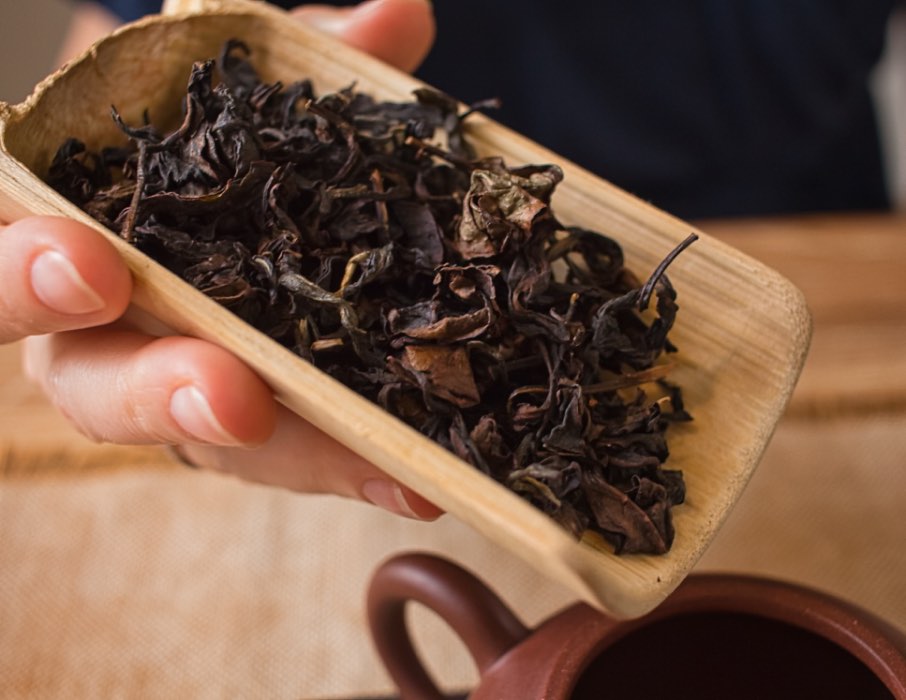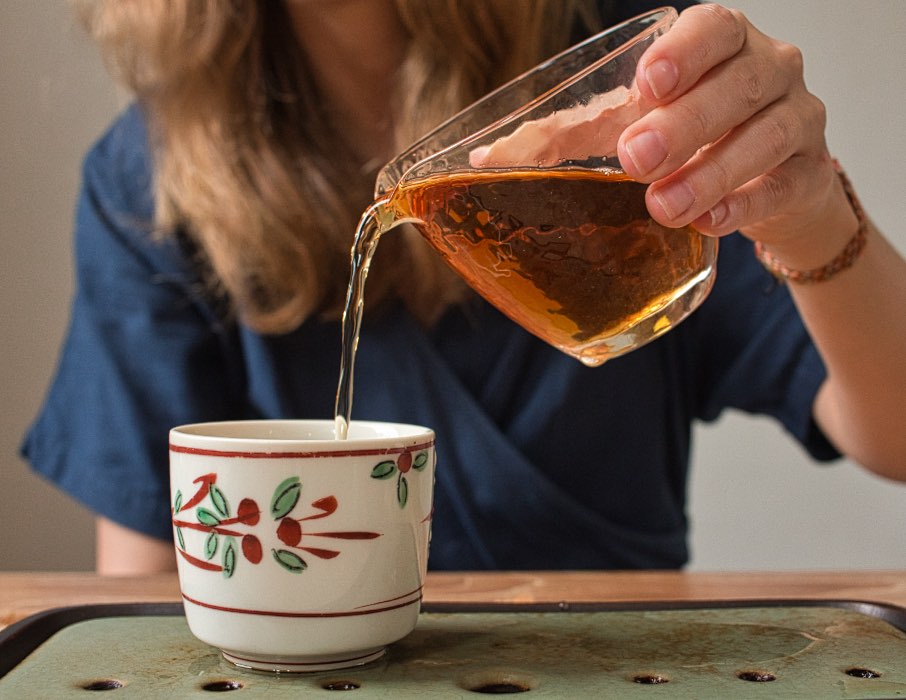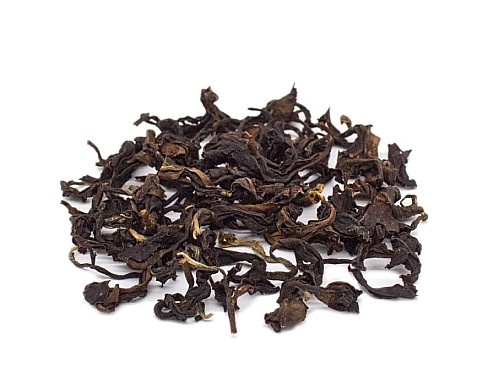2021 Gaba Jin Xuan Oolong Tea, Long Twisted
Harvest: 2021
Elevation: 1100 m
Cultivar: Jin Xuan (TRES #12)
Availability: In Stock
This Gaba will appeal to both black tea and oolong tea lovers. It warms up well. Suitable as either an aperitif or a digestif, it’s a good everyday tea, not without charm, subtle nuances, and delightful flavors. If the farmers had tried to give it a decent exterior, I am certain, it would’ve cost much more.
So, what we're presenting here is Gaba oolong that’s been processed without going beyond the medium oxidation level. This means it's neither a black Gaba tea nor a Hong Shui. The color of its infusion is amber and not a tone darker. I believe the moderate oxidation and gentle heating allowed to preserve the flavor diversity and charm of the Jin Xuan* hybrid.
The aroma of rinsed tea is piquant and bright, with dominant notes of cherry, berry jam, baked apples, and spices.
The core taste evokes a dried fruit compote, but it's no ordinary one; it's accented with noble floral notes, cherries, and piquant pepperness. In the aftertaste, the cherry undertone stands out prominently.
This Gaba is smooth on the throat and easy to drink. It leaves you feeling light and weightless. However, there is caffeine in it and this will provide its invigorating effect.
I can't say that this Gaba holds an infinite number of infusions like our black teas from trees. But if you brew it in short steepings of
Jin Xuan (TRES #12) is one of the most common hybrids in Taiwan, Thailand and other Southeast-Asian countries that produce oolongs using Taiwanese technologies.
The second such variety here in Thailand is Ruan Zhi (TRES #17). From these two cultivars, we produce 90% of all oolong varieties.
In Taiwan, instead of Ruan Zhi, the endemic Qing Xin is used. Apparently, this is why people often confuse these two varieties, or at least consider them close relatives. But in the complex formula of Ruan Zhi, the endemic cultivar Qing Xin is not present at all while in Jin Xuan (“fire flower” from Chinese) it is precisely present.
Let’s look at the formula for a general understanding of the issue:
Jin Xuan (TRES #12)
* Chin-Shin is an alternative transcription for Qing Xin
** Ying-Jy-Horng-Shin is also known as "Ying Zhi Hong Xin" (hard stem red heart)
Qing Xin (or Chin Shin like in the formula), in my opinion, gives the “fire flower” a certain zestiness and piquancy (spiciness), and the creamy notes are the merit of other participants.


Reviews (2)
Robust and strong. Lots of complex flavours and it gets better after the first couple of steeps. Can be too powerful if you don't watch the timing. Hard to beat for this money
This tea smells like spices and apples, and it is quite strong.
The taste is fruity, and has a flavor of raisins mixed with dates and cinnamon and pepper
The spiciness is subtle, but very apparent.
The aftertaste is very much like a spiced cherry!
I Have had this tea from Taiwan, made of Quin Xin, as well as one from T18.
The former is like this, but milder, and the latter might be a bit too tart for some.
This tea, despite its "ugly" or old type of rolled appearance, and lower price (compared to others at Tea-Side)
is refined in flavor, while being brisk and tart enough to be interesting.
The aftertaste is also very strong, and the aroma lingers in the empty cup. I HIGHLY recommend it!










